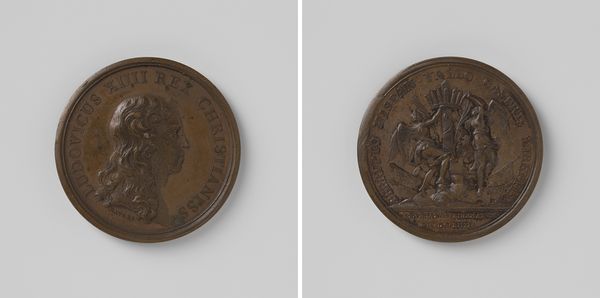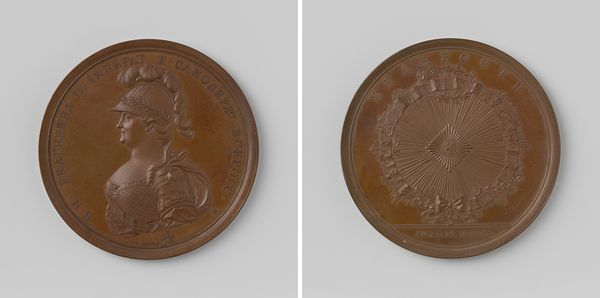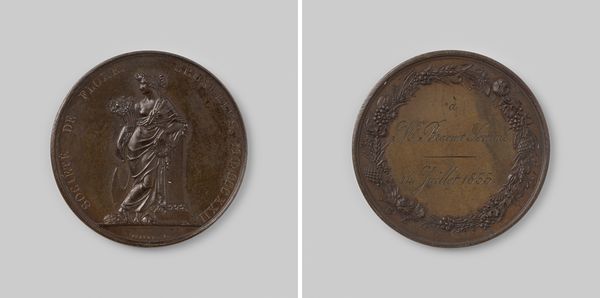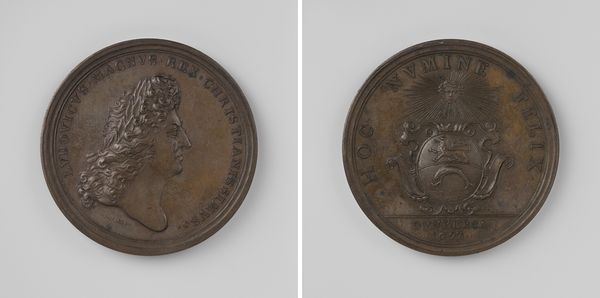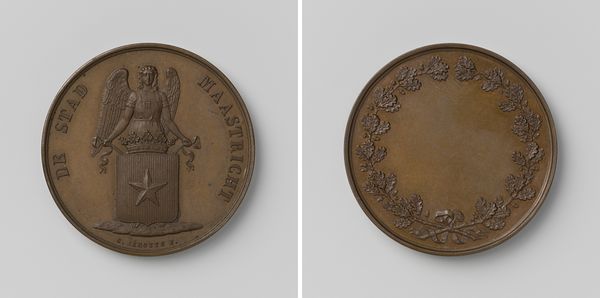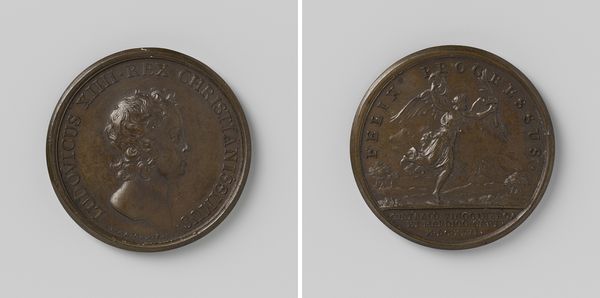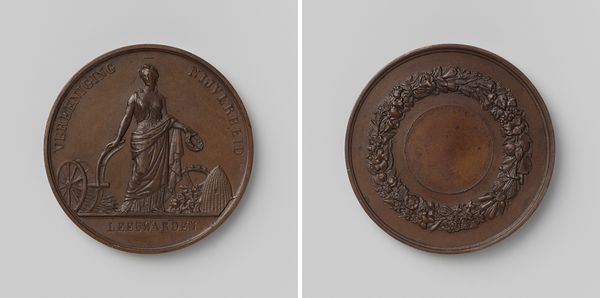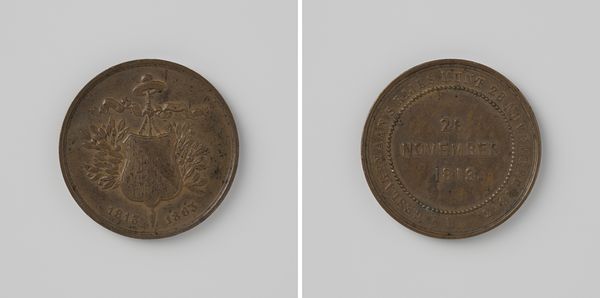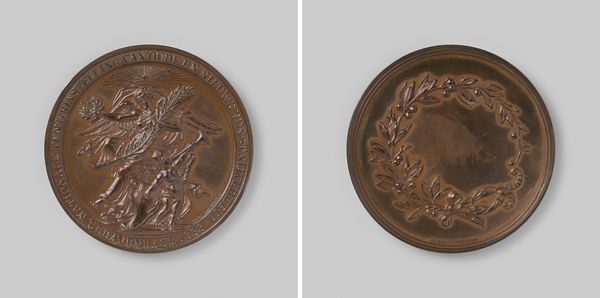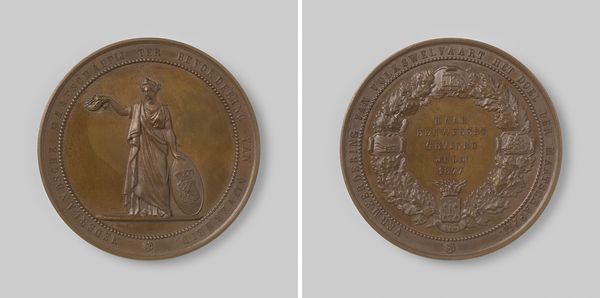
Oprichting van een standbeeld voor de schilder Pieter Paul Rubens te Antwerpen, penning geslagen op last van de Rederijkerskamer "de Olijftak" 1840
0:00
0:00
laurentjosephhart
Rijksmuseum
#
natural stone pattern
#
3d sculpting
#
3d model
#
pottery
#
3d printed part
#
virtual 3d design
#
sculptural image
#
unrealistic statue
#
3d shape
#
stoneware
Dimensions: diameter 6.8 cm, weight 156.58 gr
Copyright: Rijks Museum: Open Domain
Editor: Here we have "Oprichting van een standbeeld voor de schilder Pieter Paul Rubens te Antwerpen, penning geslagen op last van de Rederijkerskamer 'de Olijftak'," made in 1840 by Laurent Joseph Hart. It's a commemorative medal, depicting the raising of a statue of Rubens. It feels very official, very much about public image and celebration. What stands out to you about this piece? Curator: What strikes me is the choice of immortalizing a statue on a medal. It’s an artwork memorializing the public act of honoring another artist. The original statue of Rubens becomes a symbol, less about Rubens himself and more about Antwerp's civic pride and cultural identity in 1840. Consider who commissioned this: a Rhetoric Chamber, "de Olijftak", which were essentially literary societies, powerful players in shaping public opinion. Why memorialize the statue’s erection in particular? Editor: I guess because it marks a significant cultural event? The actual creation of the statue wasn’t enough, the act of erecting it… publicly… was really the important thing. Curator: Precisely. The politics of imagery are at play. Think about how public monuments function. They are rarely neutral. They assert certain values, and solidify a particular historical narrative. This medal broadcasts Antwerp's appreciation for its artistic heritage, contributing to a sense of national identity, especially during a period of significant political change and nation-building in Belgium. What does the reverse side of the medal suggest to you? Editor: It shows a coat of arms, surrounded by text and laurels… all symbols of officialdom. So it’s the state, or at least a very established institution, that’s putting its stamp on Rubens' legacy. Curator: Exactly! The medal isn’t just a memento; it’s a statement about who controls the narrative, who gets to decide which figures are worthy of veneration, and how they should be remembered in the public sphere. Editor: That’s really fascinating. I had just seen a picture, but now I understand this medal much better, not just as art but also as propaganda. Curator: Yes, and it prompts us to consider the role of museums in continuing this process of constructing cultural memory.
Comments
No comments
Be the first to comment and join the conversation on the ultimate creative platform.
